Micrometer can mean:
- Micrometer (device), used for accurate measurements by means of a calibrated screw
- American spelling of micrometre, a millionth of a metre
Micrometer can mean:
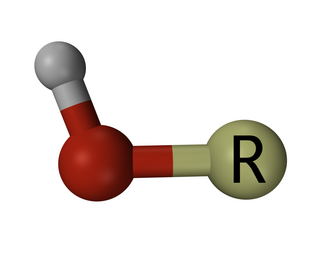
A hydroxy or hydroxyl group is a functional group with the chemical formula -OH and composed of one oxygen atom covalently bonded to one hydrogen atom. In organic chemistry, alcohols and carboxylic acids contain one or more hydroxy groups. Both the negatively charged anion HO−, called hydroxide, and the neutral radical HO•, known as the hydroxyl radical, consist of an unbonded hydroxyl group.

The micrometre or micrometer, also commonly known as a micron, is an SI derived unit of length equalling 1×10−6 metre ; that is, one millionth of a metre.
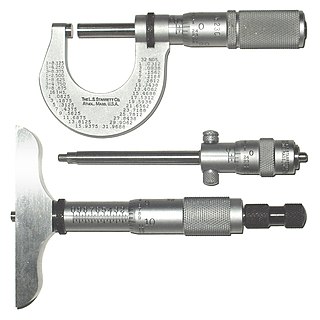
A micrometer, sometimes known as a micrometer screw gauge, is a device incorporating a calibrated screw widely used for accurate measurement of components in mechanical engineering and machining as well as most mechanical trades, along with other metrological instruments such as dial, vernier, and digital calipers. Micrometers are usually, but not always, in the form of calipers. The spindle is a very accurately machined screw and the object to be measured is placed between the spindle and the anvil. The spindle is moved by turning the ratchet knob or thimble until the object to be measured is lightly touched by both the spindle and the anvil.
A film is a thin layer of coating, skin.
SML may refer to:

A caliper is a device used to measure the dimensions of an object.
A bore gauge is a collective term for the tools that are unique to the process of accurately measuring holes.

A heliometer is an instrument originally designed for measuring the variation of the sun's diameter at different seasons of the year, but applied now to the modern form of the instrument which is capable of much wider use.
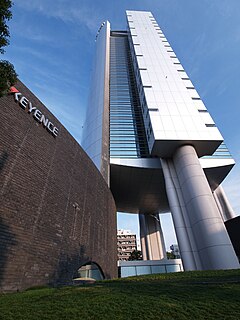
Keyence Corporation is a direct sales organization that develops and manufactures automation sensors, vision systems, barcode readers, laser markers, measuring instruments, and digital microscopes.

The Priroda module was the seventh and final module of the Mir Space Station. Its primary purpose was to conduct Earth resource experiments through remote sensing and to develop and verify remote sensing methods. The control system of Priroda was developed by the Khartron.
6061 is a precipitation-hardened aluminium alloy, containing magnesium and silicon as its major alloying elements. Originally called "Alloy 61S", it was developed in 1935. It has good mechanical properties, exhibits good weldability, and is very commonly extruded. It is one of the most common alloys of aluminum for general-purpose use.

Animal fibers are natural fibers that consist largely of certain proteins. Examples include silk, hair/fur and feathers. The animal fibers used most commonly both in the manufacturing world as well as by the hand spinners are wool from domestic sheep and silk. Also very popular are alpaca fiber and mohair from Angora goats. Unusual fibers such as Angora wool from rabbits and Chiengora from dogs also exist, but are rarely used for mass production.
LULI2000 is a high-power laser system dedicated to scientific research. It is located in LULI laboratory, at École Polytechnique in France. The main application of this type of laser is related to the very high energy fluxes obtained after focusing onto tiny focal spots, from micrometers to hundreds of micrometers in diameter. The interaction between these focused beams and small targets produces very hot plasmas, up to many hundred million degrees, high densities and high pressures. Depending on the laser and target parameters, these laser-generated plasmas may be compared to stars or planet interiors.
Panaeolus africanus is a little brown mushroom that contains irregular amounts of the hallucinogens psilocybin and psilocin. It has been found in central Africa and southern Sudan.

Panaeolus olivaceus is a widely distributed, seldom identified, little brown mushroom that contains the hallucinogen psilocybin; it is often mistaken for Panaeolina foenisecii and is distinguished by its black spore print and darker gill coloration when mature alongside a slightly thicker stem. It is even more easily mistaken for Panaeolus cinctulus or Panaeolus fimicola and can be distinguished from them both by its slightly roughened spores. It is also easily confused with Panaeolina castaneifolia, a species which has spores that are dark brown and significantly more roughened.
John Sweet may refer to:

A filar micrometer is a specialized eyepiece used in astronomical telescopes for astrometry measurements, in microscopes for specimen measurements, and in alignment and surveying telescopes for measuring angles and distances on nearby objects. The word filar derives from Latin filum 'a thread'. It refers to the fine threads or wires used in the device.
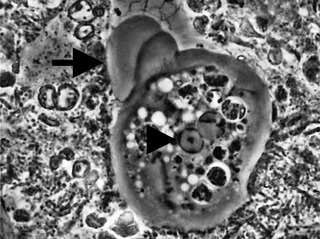
Entamoeba gingivalis is an opportunistic Amoebozoa and is the first amoeba in humans to be described.
Micromachining may refer to:
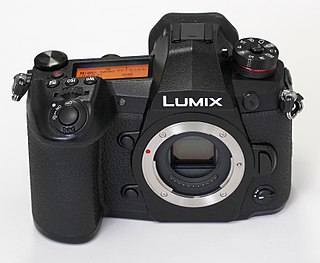
The Panasonic Lumix DC-G9 is a Micro Four Thirds mirrorless interchangeable lens camera body announced by Panasonic at the end of 2017.